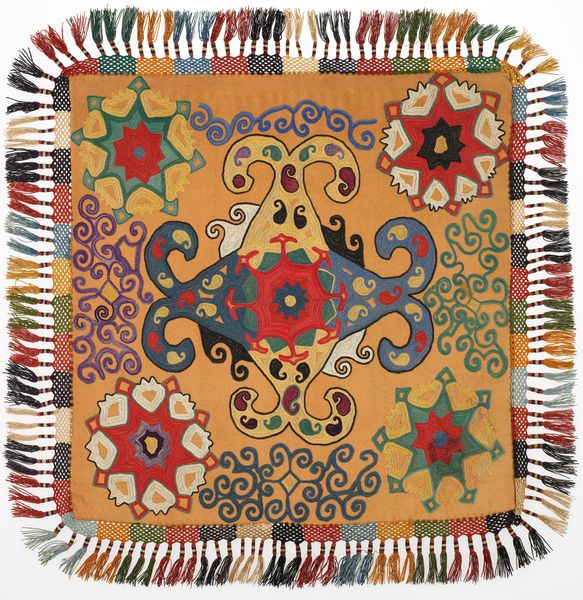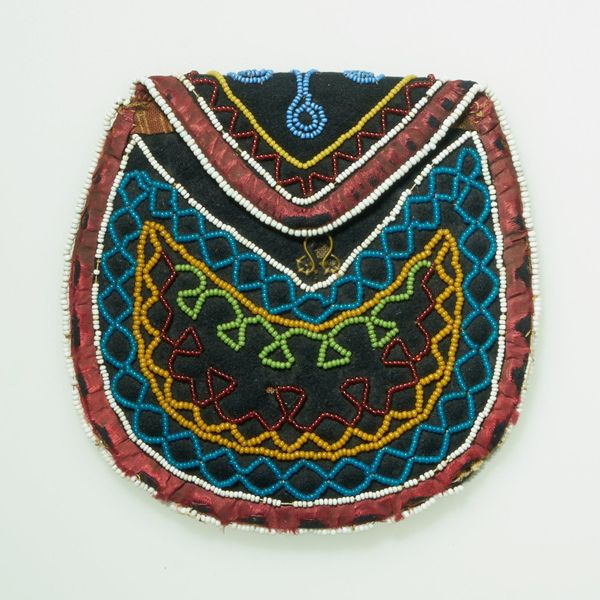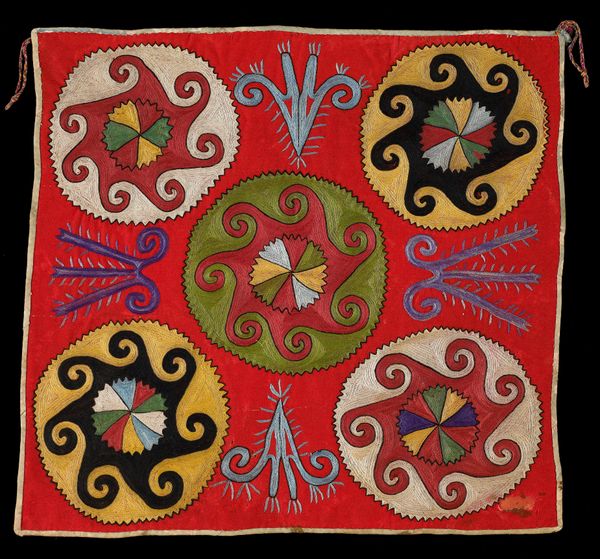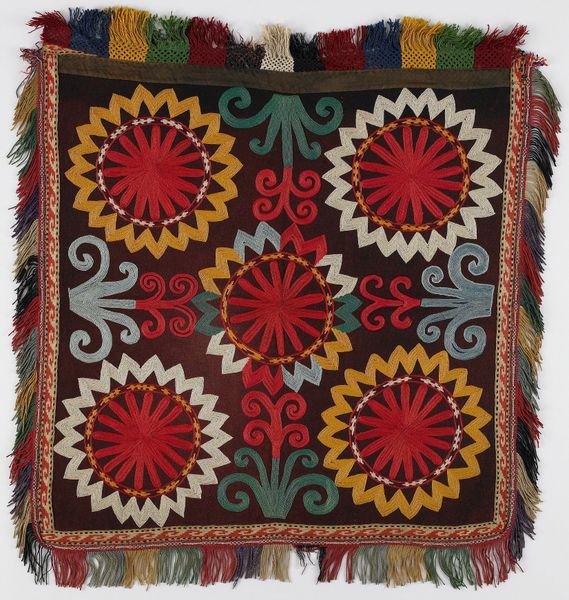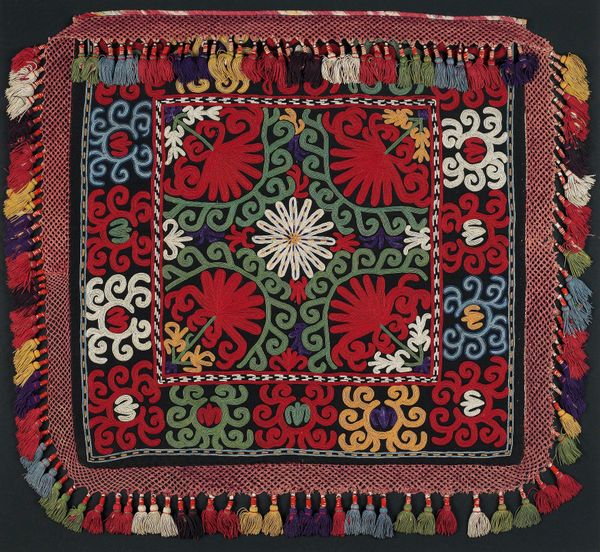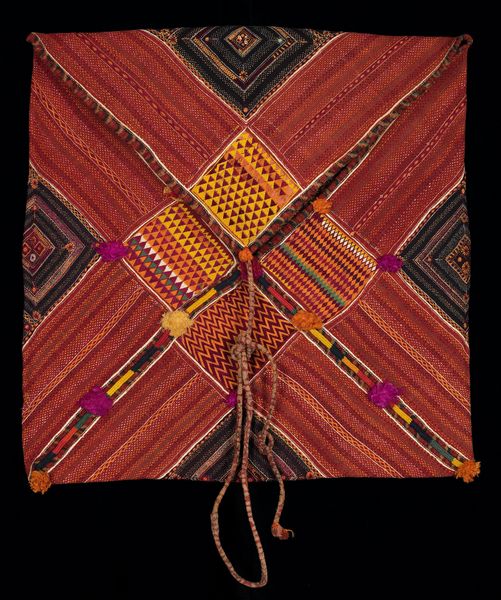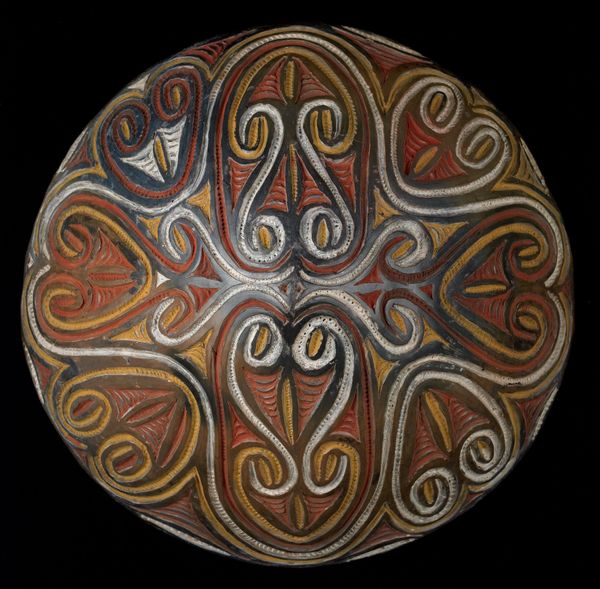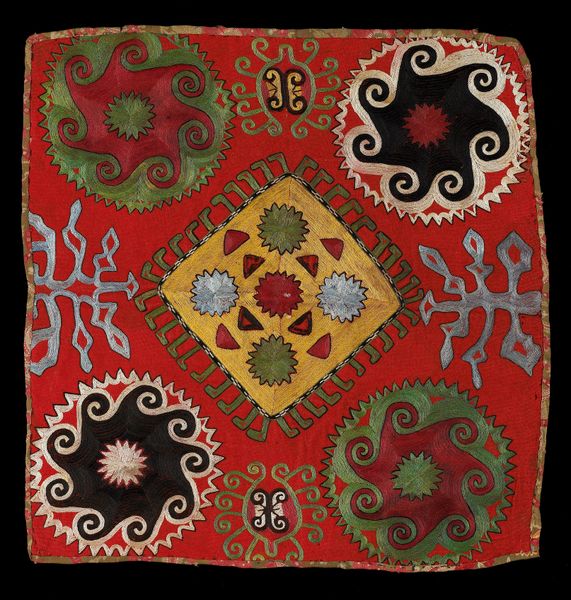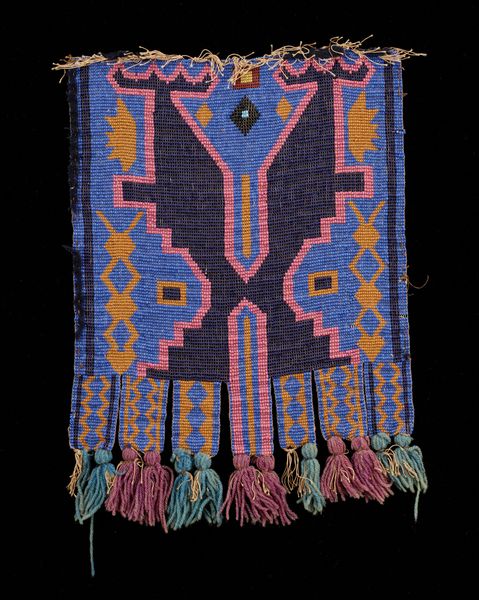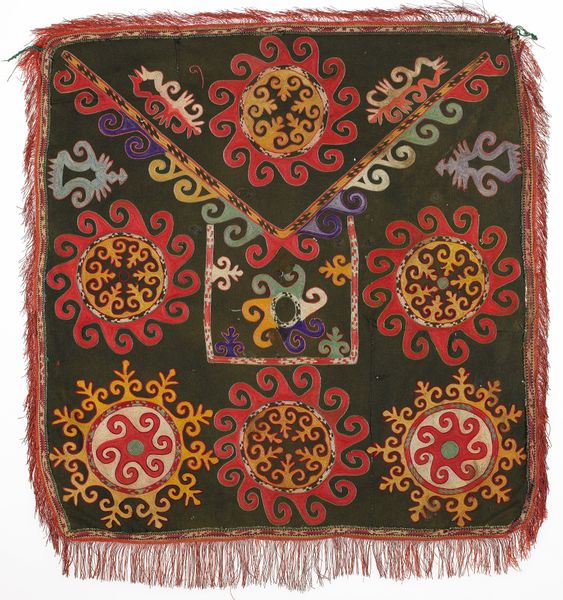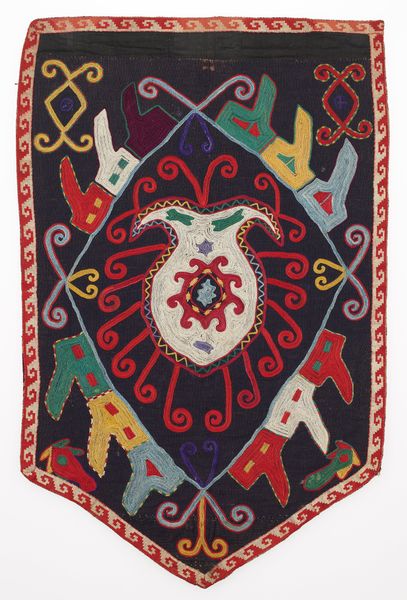
silk, textile, cotton
#
african-art
#
organic
#
silk
#
textile
#
geometric pattern
#
organic pattern
#
geometric
#
cotton
Dimensions: 3 3/4 x 3 3/8 in. (9.53 x 8.57 cm)
Copyright: Public Domain
Editor: Here we have a vibrant textile piece titled "Bag," dating back to the 19th century. The anonymous artist used materials like silk and cotton to create a stunning geometric and organic pattern. I’m struck by the tactile nature of it – you can almost feel the different textures just by looking at it. What stands out to you? Curator: It's intriguing to consider this "Bag" as a document of labor, a record of countless hours of handwork. Note the tension between the luxurious silk and the more commonplace cotton; what social narratives do you imagine that tension reflects? Editor: It’s interesting you say that. It prompts me to wonder about who exactly would have been producing such an item? Curator: Exactly! Was it produced for trade? Was it a commissioned piece or something created for personal use within a community? Look at the detail - those complex geometric patterns interwoven with organic motifs – these aren’t merely decorative, but likely encode social or spiritual information meaningful to a specific group of people. What do the materials themselves – the availability of certain dyes or types of cloth – suggest about the economic landscape at the time of its creation? Editor: So, considering the silk alongside the cotton prompts us to consider broader networks of trade and maybe even class dynamics at the time. Curator: Precisely. Analyzing the materiality gets us closer to understanding the circumstances of its production and circulation and moves us beyond thinking of it as simply a ‘bag’, right? Editor: Definitely. I see it now as less of an object and more as a kind of historical record embedded in the very fibers of the piece. It encourages me to think beyond just the aesthetics and toward its social life. Curator: Indeed. Perhaps we both walk away understanding this piece as an emblem of human effort.
Comments
No comments
Be the first to comment and join the conversation on the ultimate creative platform.
